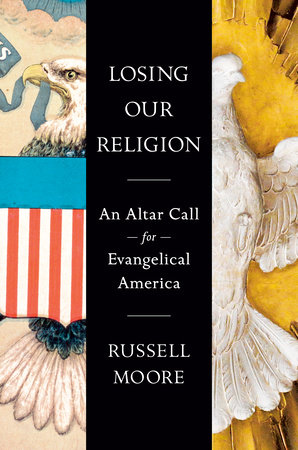My family attended the grand opening of the Answers in Genesis Creation Museum this past weekend and I saw what I expected to see: closed minded propagandists who don’t want any challenge to their narrow view of origins. But they weren’t in the Museum
So we drove past the protesters and into a museum whose exhibits constantly reference both sides of the creation/evolution debate.
My three older boys were, quite literally, jumping up and down at the prospect of dinosaurs, and the animated creatures did not disappoint. The moving, roaring facsimile reptiles were big and (at least in the post-Fall exhibits) fierce. The 27 million dollar budget was obvious here, since the dinosaurs were more Jurassic Park quality than Land of the Lost. While my boys ran around on a lifesize replica of Noah’s Ark and pretended to sword-fight a T-Rex, their mother and I read the displays on ice ages, species development, and differing understandings of radiometric dating.
The planetarium inspired awe at the vastness of the universe, bringing to mind the Psalmist’s question “What is man that you are mindful of him?” while answering it as the New Testament does: with the Incarnation and atonement of the Redeemer-Ruler of the cosmos. I was pleasantly surprised that the planetarium exhibit acknowledges problems caused for any biblical historical timeline by the time it takes starlight to reach our field of vision. I was furthermore surprised that the exhibit didn’t take a dogmatic stance on any one of the possible creationist answers to the problem: whether the concept of starlight created already in transit or Russell Humphreys’ theory of the question resolved by relativity of space and time or any of the others.
In fact, this scientific humility marked the museum, in a way not typical of some other attempts at creation science. The Museum exhibits make clear a conviction that, hermeneutically and theologically, a relatively “young” universe makes the best sense of the biblical data. The Museum exhibits provide possible scientific explanations of how this biblical authority can be scientifically explained but they do not confuse the authority of Scripture with the derivative and revisable authority of any scientific theory, whether that is specifics of fossilization and flood geology or a “vapor canopy” over the pre-Flood biosphere.
Frankly, even if I were a Darwinist, I would think I would have no more reason to be angered by this exhibit than by a New Age museum arguing for the Gaia hypothesis of earth as a living organism or by an Eastern religion’s museum arguing for a universe with no beginning and no end.
Speaking of Darwinism, it was everywhere, and fairly presented. In virtually every exhibit, on the “Lucy” fossil or on carbon-14 dating or on the fossil record or on the Big Bang, the information included both the Darwinist-materialist explanation for the scientific data along with how the same data are interpreted by the Museum’s biblical creationist grid.
I can only wish the same sense of epistemic humility were found in the protesters standing with placards outside the Museum’s gates or in a plane flying overhead with a banner reading “Thou shalt not lie.” Inside the Museum, I was asked by a reporter to respond to the Darwinist protesters’ charge that I was “confusing” my children by bringing them into a museum that presents a markedly different view of cosmic history than that found in secular science textbooks. I am dumbfounded that groups with names such as “Free Inquiry” could believe that seeing viewpoints at variance with approved orthodoxy, whether religious or materialist, is “confusing.” After all, weren’t the Big Bang and natural selection “confusing” to a previous generation of schoolchildren?
It is remarkable that no Christian has ever asked me if I am “confusing” my children by taking them, as I did later this weekend, to the Cincinnati-area aquarium with exhibits everywhere assuming only a Darwinist/naturalist understanding of the origins of aquatic life. Most conservative Christians I know want their children to understand Darwin’s account of human evolution, and a fair representation of it, precisely so they will not be mystified by it later.
One would think the secularist free-thinkers would want everyone to see the creationist account of origins, for the very sake of the contrast with what they would see as a more viable model. I can even understand Darwinist ridicule of a narrative that is so strikingly at odds with the current scientific consensus. What I cannot understand is the attempt to suppress the debate itself, whether through attempted zoning regulation mischief or through noisy planes overhead on opening day. Whatever happened to postmodernism?
I suspect, in the end, that the humility of the Creation Museum’s presentation is precisely what worries some Darwinists. Some previous generations of creationists have spoken in ways that made it seem that the scientific data is on our side, that the debate can be won using the very same playing field as naturalism itself with an appeal to raw general revelation. The Creation Museum exhibits offer very little triumphalism of this sort. The exhibits quite often ask the questions “what if” and “could it be.” The exhibits honestly acknowledge that every viewpoint rests on some authority, with this viewpoint interpreting the data through the authority of divine revelation. The Museum designers also seem to understand that the debate with Darwinism will not be won ultimately with brute facts, but with an alternative narrative, a narrative that rings truer than the Darwinist story of a nature accidentally but perpetually red in tooth and claw.
As we drove out of the museum gates, my boys asked me about the protesters outside: “What are they yelling about?” My wife and I gave a thumbnail explanation of Darwinism, and it dawned on me that the problem for the protesters is not that they are scientifically wrong. They are certainly not our enemies. The problem is that they hold a view of the world that is sad and hopelessly violent.
I don’t pray, first of all, that they will be convinced by scientific arguments, whether those of young-earth creationists or Intelligent Design theorists. I pray that the Darwinist protesters become like the little children they see before them, with their snow cones and dinosaur balloons.
I pray the protesters see not just the truth but the beauty of a world in which scientifically impossible things happen: lions eat straw like an ox, the world is saved in an ark, people come back from the dead, camels pass through needles’ eyes, old men are born again.






